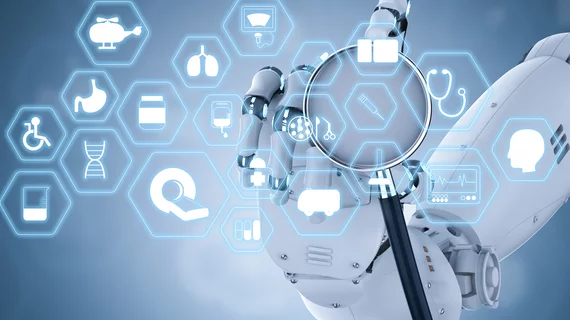ASTRO 2019: AI predicts when patients will experience radiation-related side effects
AI can predict when patients undergoing radiation treatment for head and neck cancer may lose significant weight or require a feeding tube, according to findings presented at the 2019 annual meeting of the American Society for Radiation Oncology (ASTRO).
“In the past, it has been hard to predict which patients might experience these side effects,” lead author Jay Reddy, MD, PhD, an assistant professor at The University of Texas MD Anderson Cancer Center in Houston, said in a prepared statement. “Now we have a reliable machine learning model, using a high volume of internal institutional data, that allows us to do so.”
The authors developed numerous models to analyze data from more than 700 patients with head and neck cancer who received treatment from 2016 to 2018 at one of five MD Anderson locations. The median patient age was 62 years old.
The team hoped to use its AI models to predict three side effects associated with head and neck cancer: significant weight lost, a need for a feeding tube and unplanned hospitalization.
“Being able to identify which patients are at greatest risk would allow radiation oncologists to take steps to prevent or mitigate these possible side effects,” Reddy said in the same statement. “If the patient has an intermediate risk, and they might get through treatment without needing a feeding tube, we could take precautions such as setting them up with a nutritionist and providing them with nutritional supplements. If we know their risk for feeding tube placement is extremely high—a better than 50% chance they would need one—we could place it ahead of time so they wouldn’t have to be admitted to the hospital after treatment.”
Overall, the team’s models with the best performance were able to predict significant weight loss with an area under the ROC curve (AUC) of 0.751 and the need for feeding tube placement with an AUC of 0.755. No models could accurately predict unplanned hospitalizations, however. The best AUC by any model was 0.64.
“Machine learning can make doctors more efficient and treatment safer by reducing the risk of error,” Reddy said in the statement.
The 2019 ASTRO annual meeting is Sept. 15-18 in Chicago.

